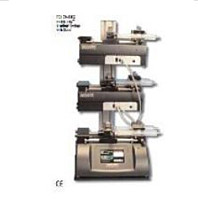Efficient delivery of nucleic acids into cells is a promising technique to modulate cellular gene expression for therapeutic and research applications. Cationic lipid-based liposomes represent one of the most intensively studied and employed nonviral vectors. They are positively charged at physiological pH and spontaneously self-assemble with polyanionic nucleic acids forming nanoscaled complexes named lipoplexes. Here, we draft a simple protocol for the development, characterization, optimization, and screening of liposomal formulations for in vitro gene delivery. In particular, we report as a practical example a quick method to formulate and extrude nanometer-sized unilamellar cationic vesicles composed of DOTAP as cationic lipid and DOPE as zwitterionic helper lipid at 1:1 molar ratio. The physico-chemical characterization of liposomes and lipoplexes involves the measurement of mean diameter and overall surface charge using Dynamic Light Scattering (DLS) and Laser Doppler Microelectrophoresis. The outlined transfection procedure takes into account several experimental parameters affecting the in vitro performance of gene delivery systems, paying special attention to the charge ratio (CR). Gene delivery effectiveness is evaluated both in terms of transfection efficiency and cytotoxicity of the vector to find the optimal transfection conditions. Importantly, the proposed protocol can be easily shifted to different types of nonviral vectors.






